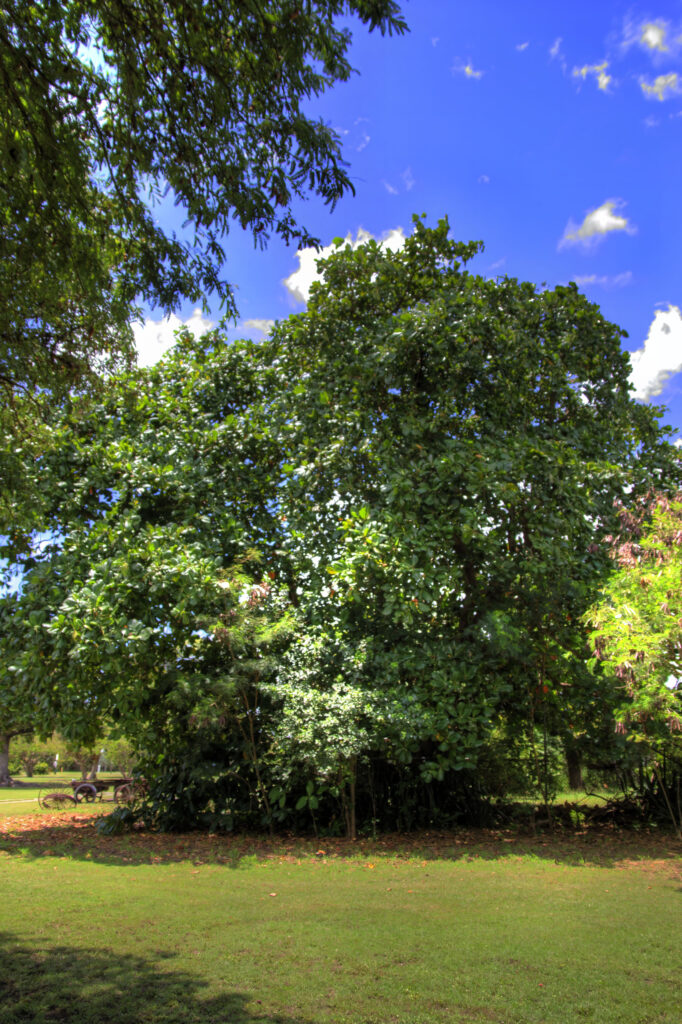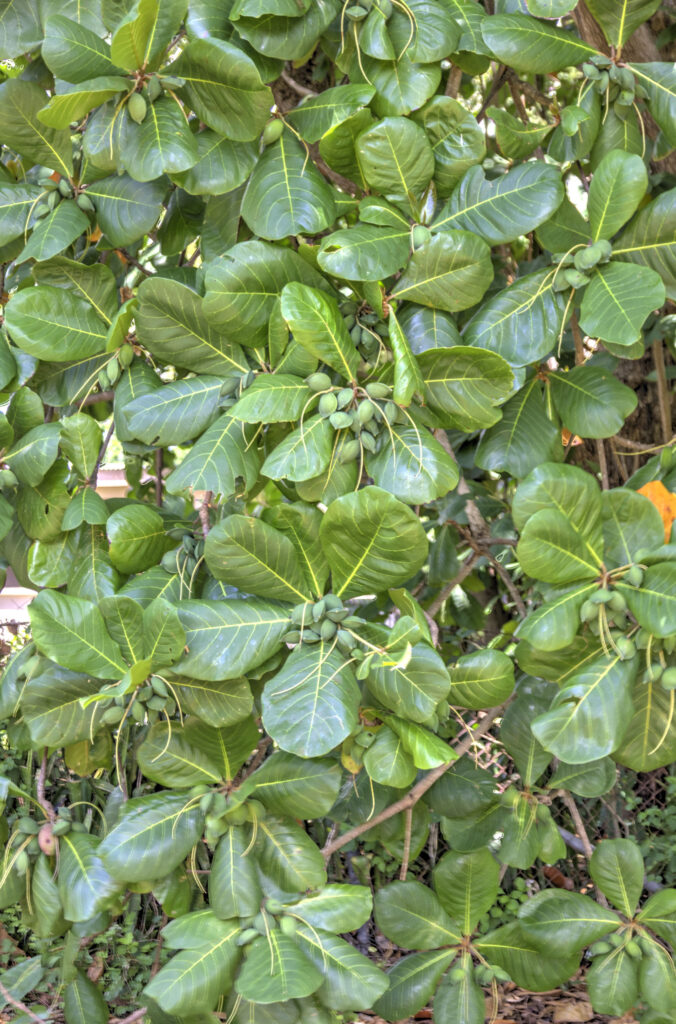Common Names: Indian Almond Tree, Sea Almond, Tropical Almond, Bengal Almond
Scientific Name: Terminalia catappa
Terminalia catappa, commonly known as the Indian Almond Tree, is a large tropical tree native to the Indian subcontinent and Southeast Asia. It belongs to the Combretaceae family and is renowned for its ornamental value, as well as its various medicinal and cultural uses. This majestic tree is esteemed for its broad canopy, providing ample shade and shelter to various life forms beneath it.
The Indian Almond Tree typically grows up to 35 meters in height, with a wide-spreading canopy that can extend equally wide. Its leaves are large, glossy, and elliptical, ranging from 15 to 30 centimeters in length, turning a striking shade of red before shedding. The tree bears small, fragrant flowers which are followed by woody, green fruits that turn brown when ripe, containing a single seed within.
Terminalia catappa thrives in tropical climates, particularly in regions with well-drained soils and ample sunlight. It is commonly found along coastal areas, riverbanks, and in tropical rainforests. Its natural range includes countries such as India, Sri Lanka, Malaysia, Indonesia, and northern Australia.
The Indian Almond Tree, is a remarkable species that embodies the rich cultural heritage and ecological diversity of tropical regions. From its majestic stature and ornamental beauty to its medicinal properties and ecological significance, this iconic tree continues to enchant and inspire people around the world.
Medicinal Uses:
Various parts of the Terminalia catappa tree have been utilized in traditional medicine for centuries. The leaves are known for their antimicrobial and anti-inflammatory properties and are often brewed into teas or applied topically to treat skin ailments. The seeds are rich in oil and have been used in traditional remedies for digestive issues.
Ecological Importance:
The Indian Almond Tree plays a crucial role in the ecosystems where it grows. Its expansive canopy provides habitat and food for numerous bird species, while its fallen leaves enrich the soil with organic matter. Additionally, the tree’s extensive root system helps prevent soil erosion along coastlines.

